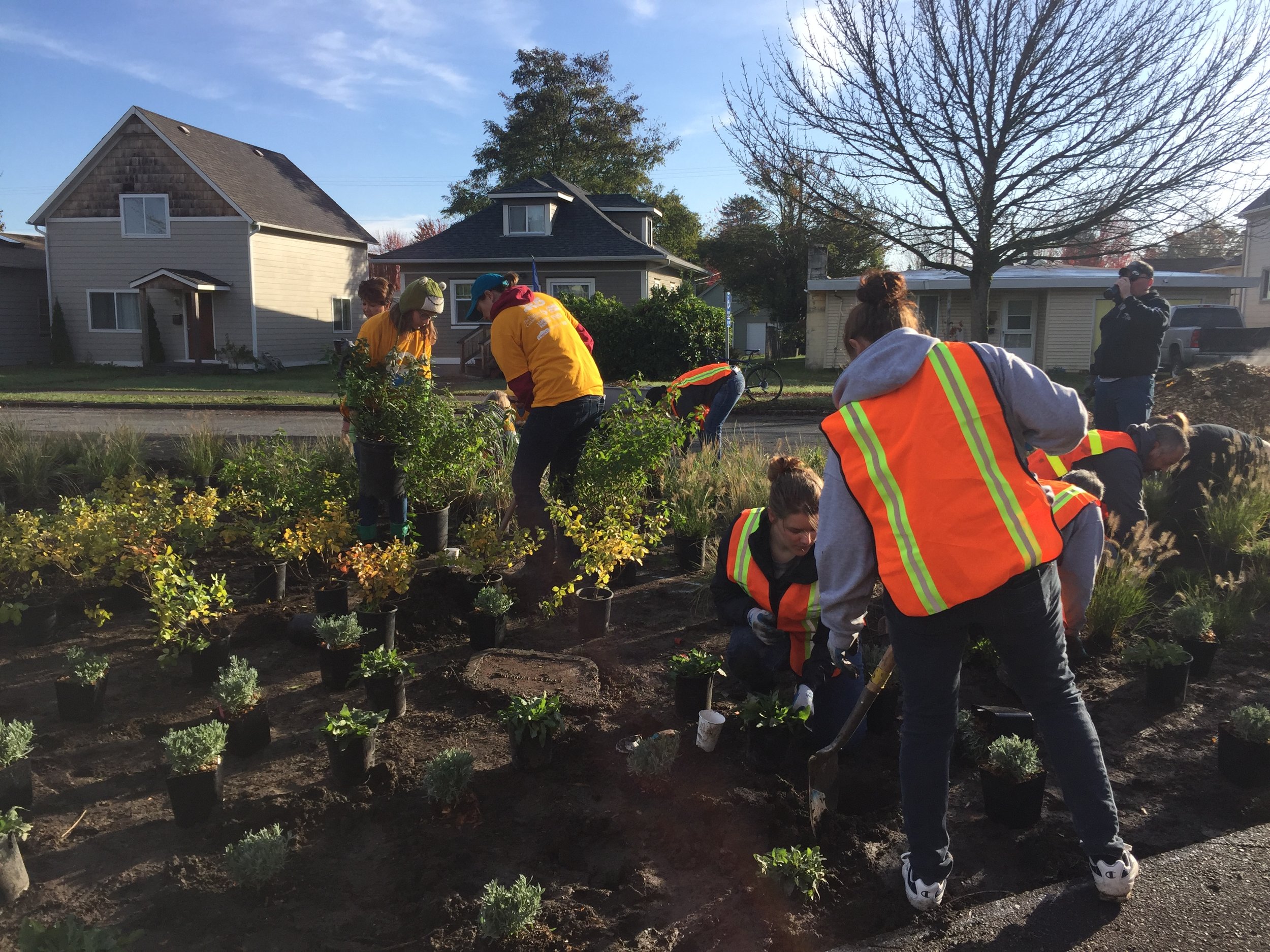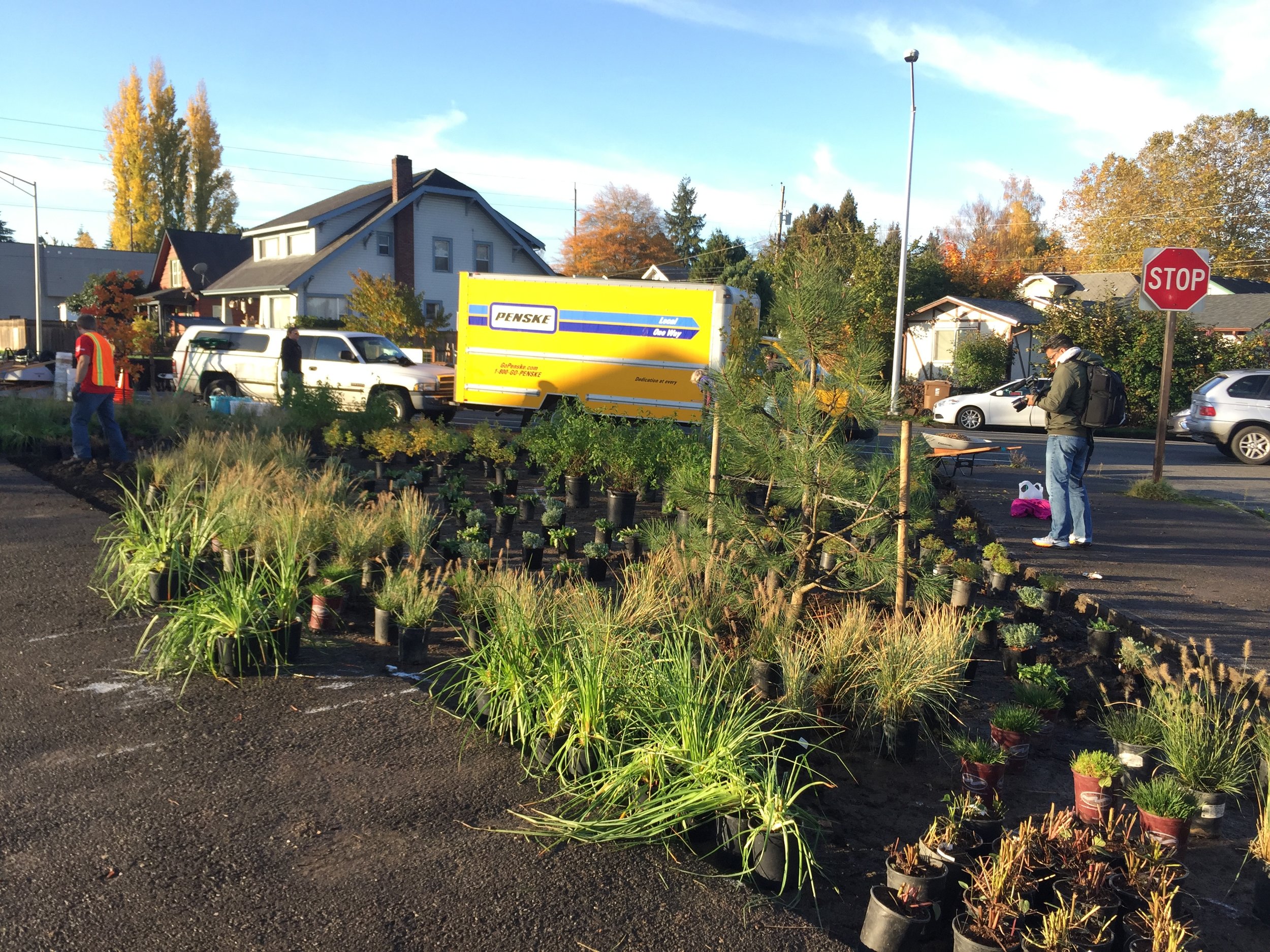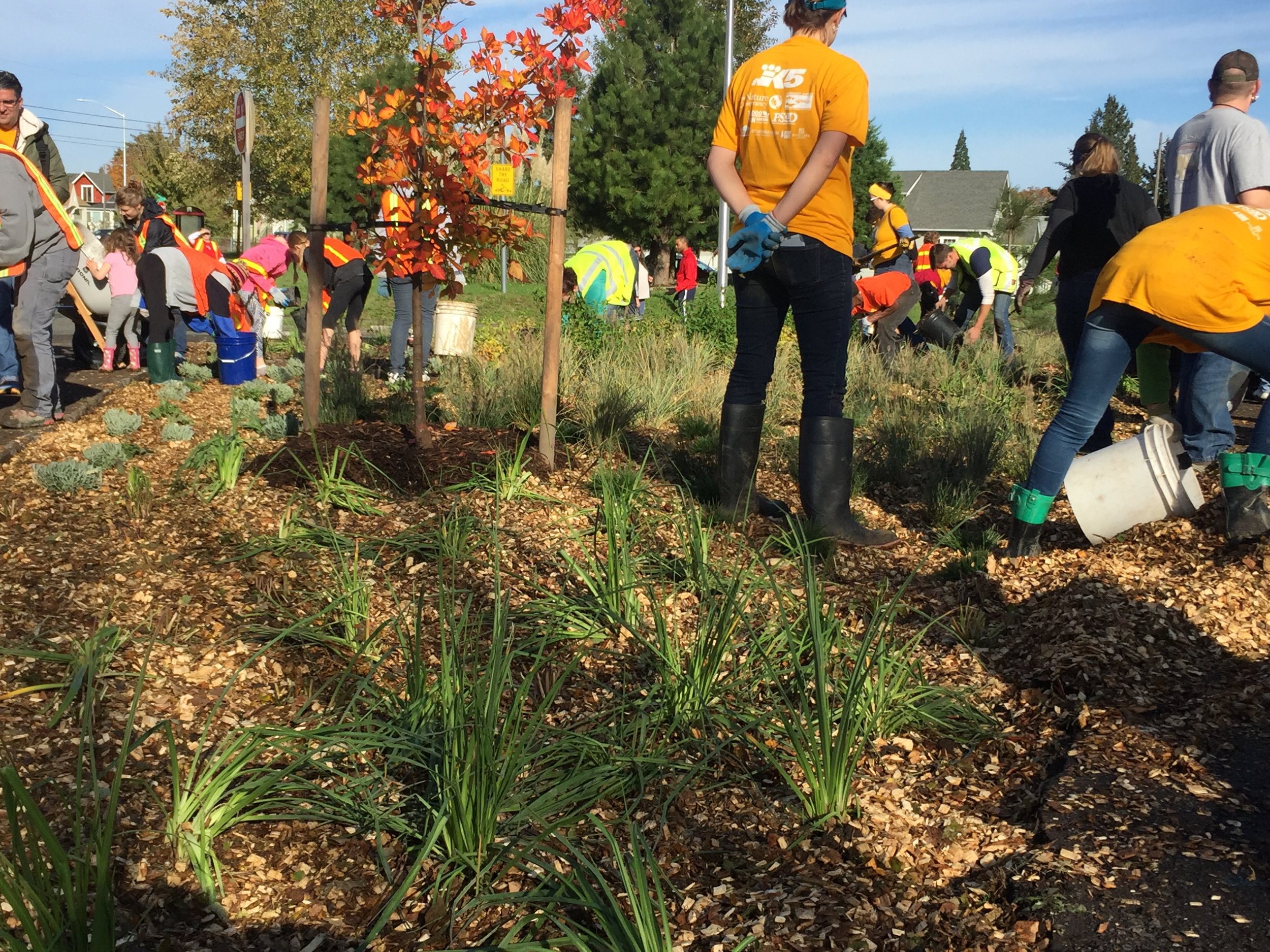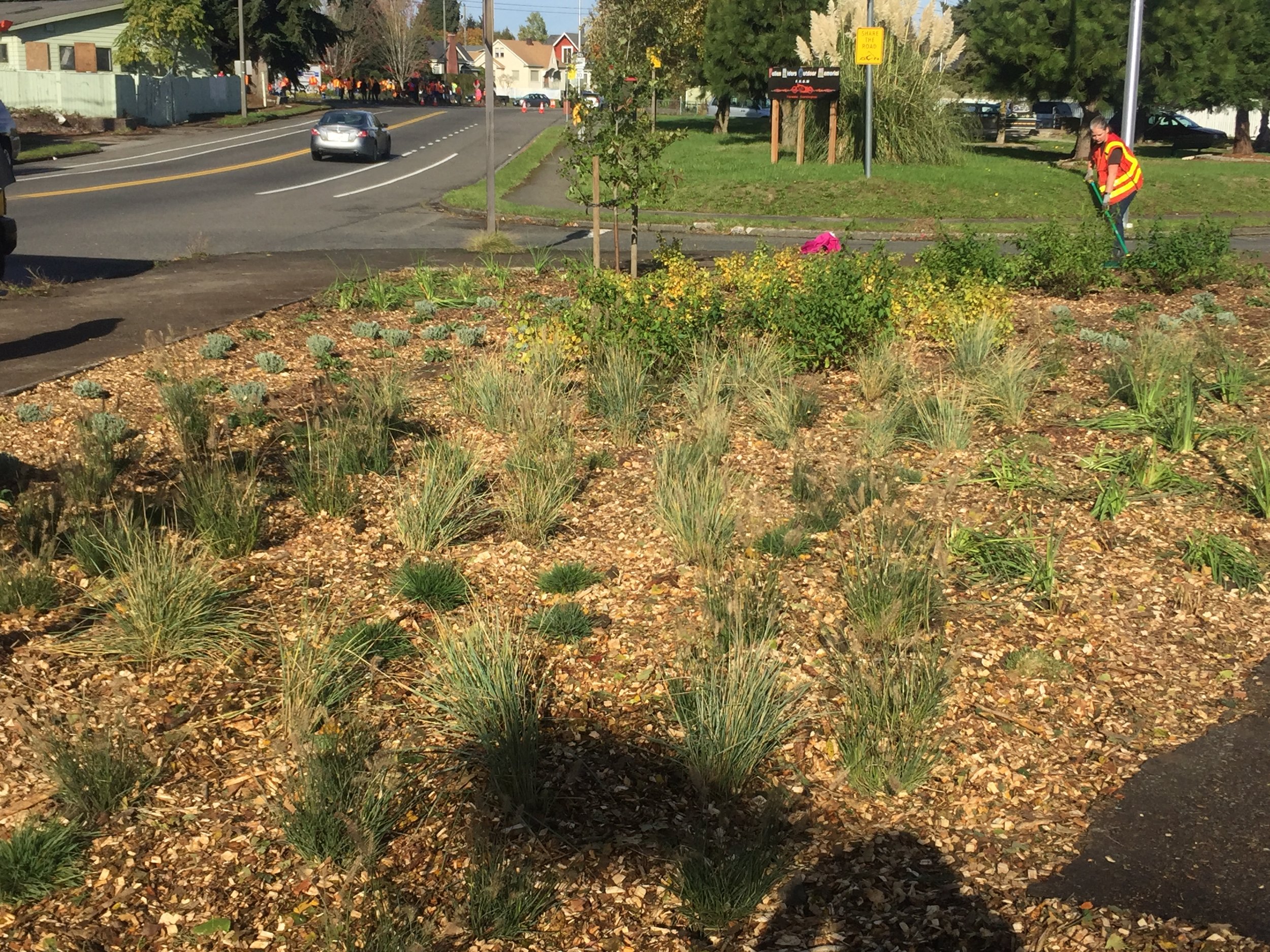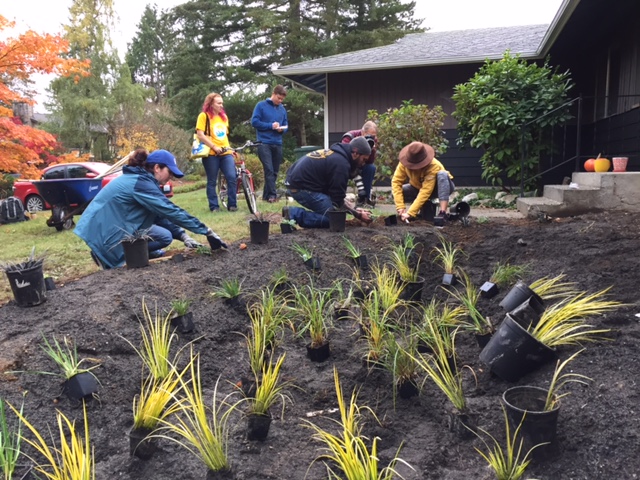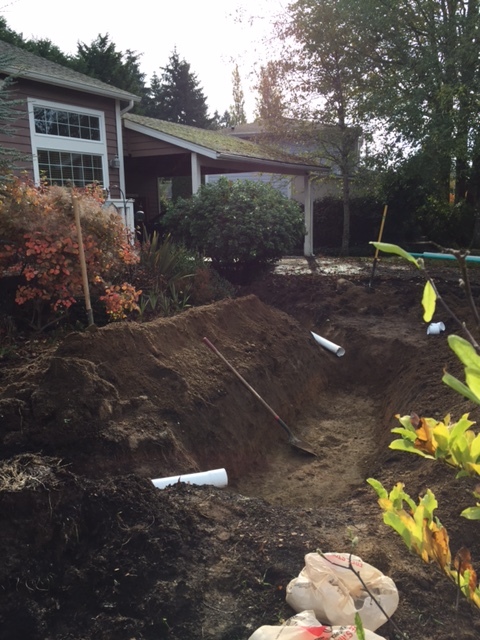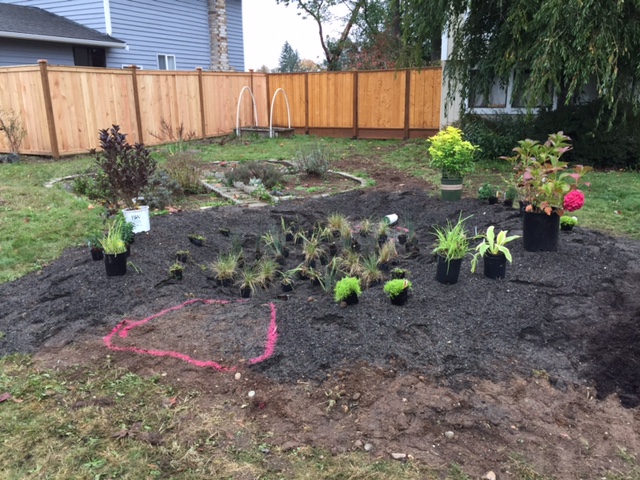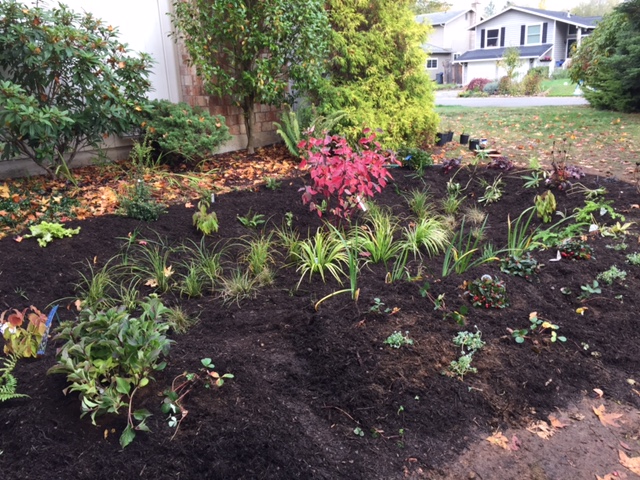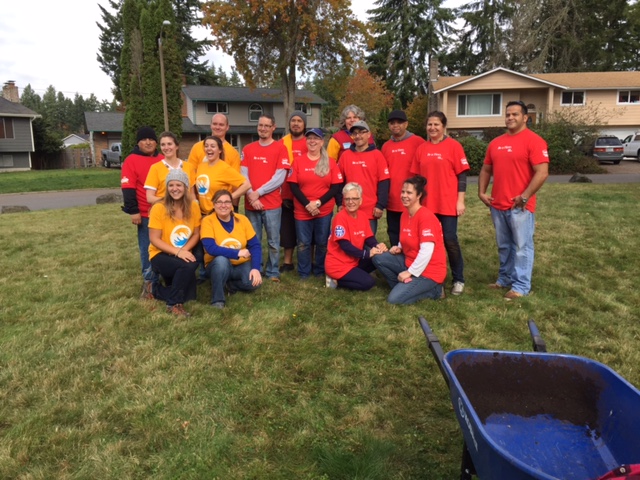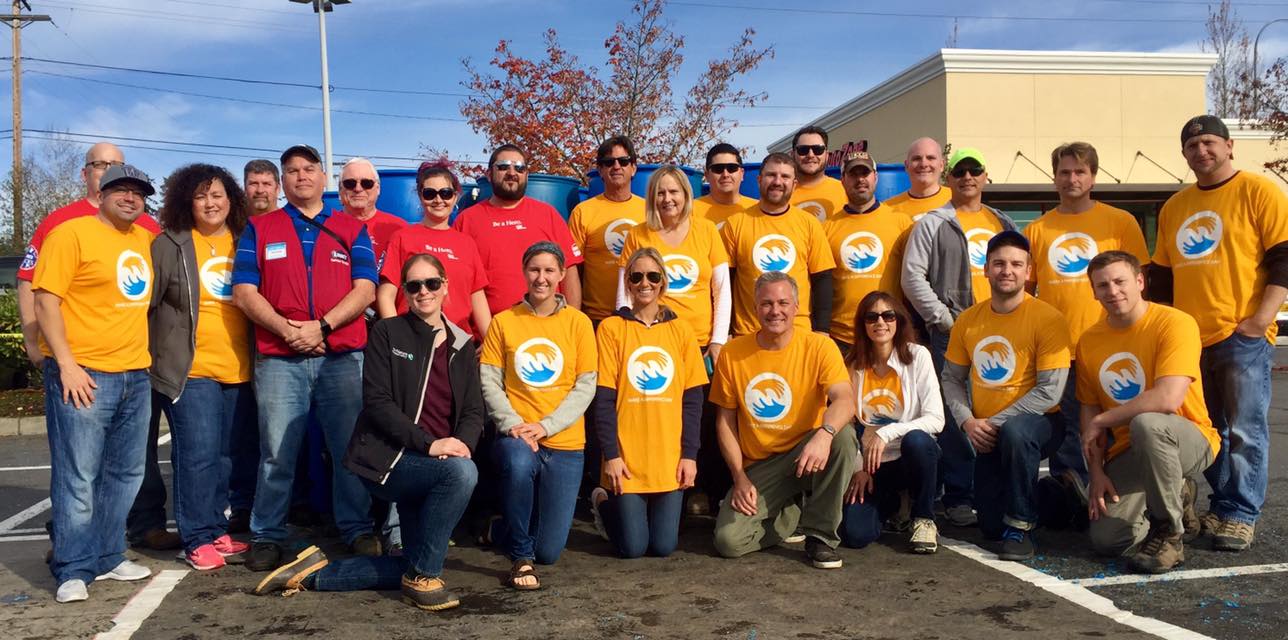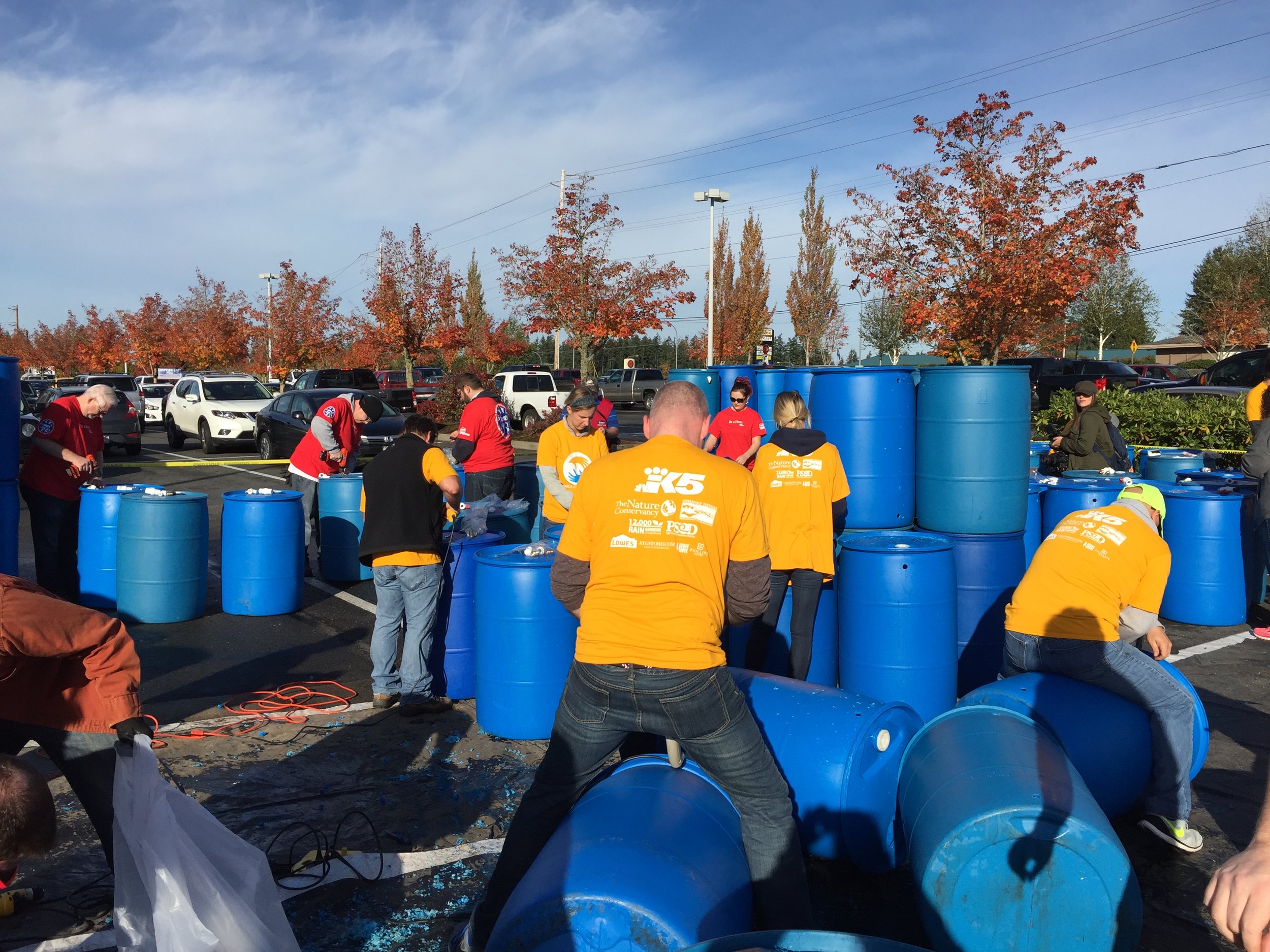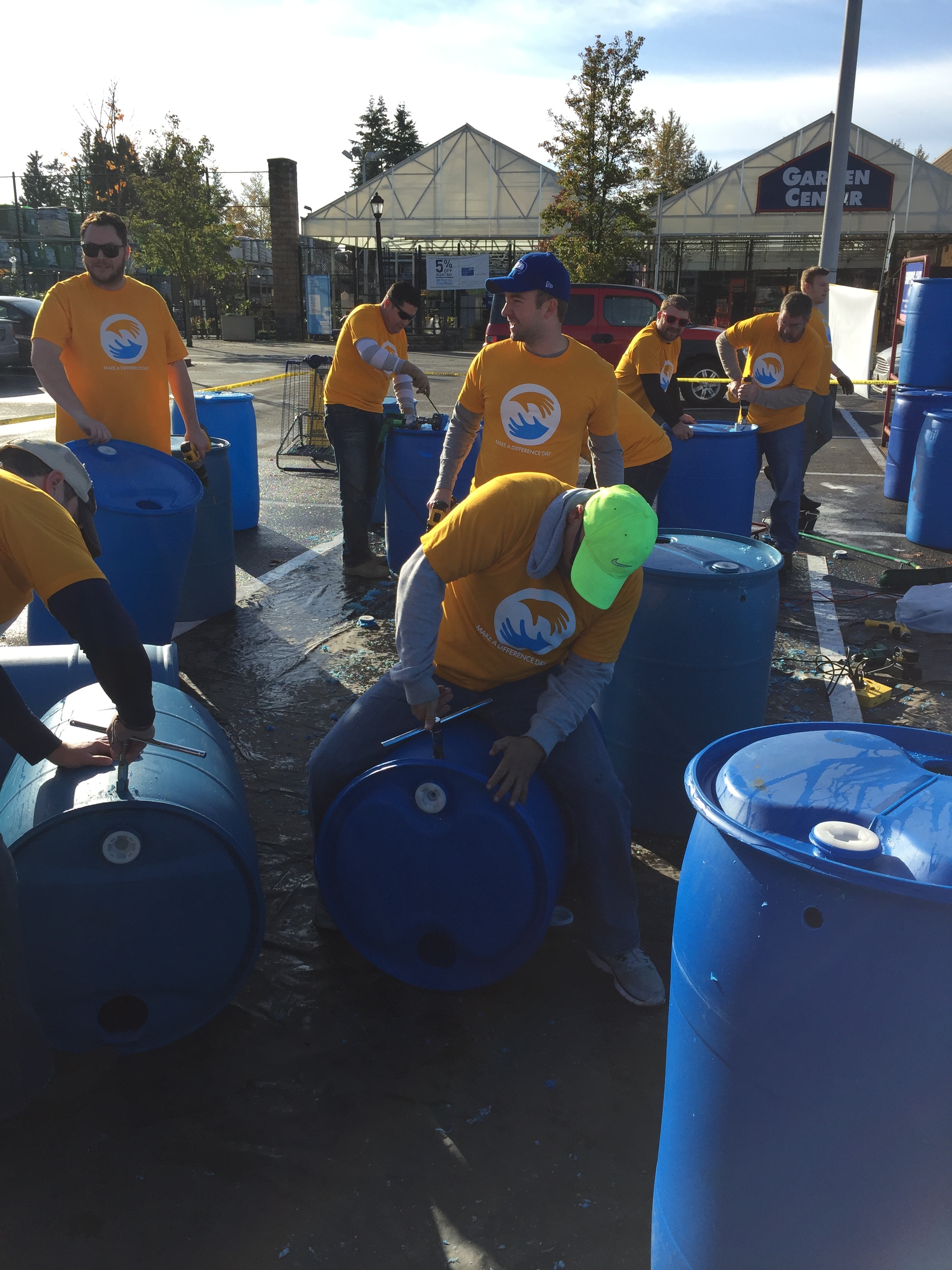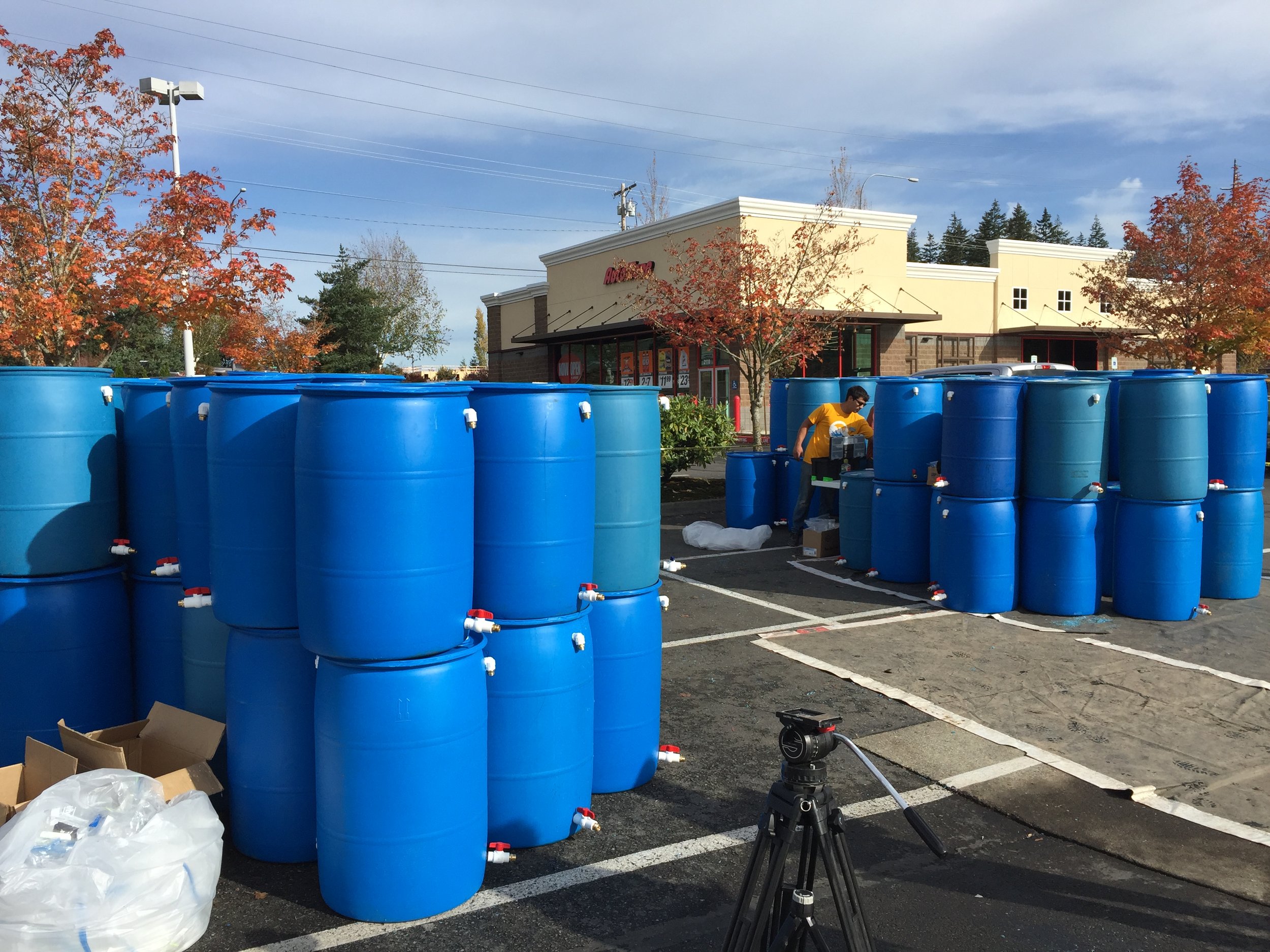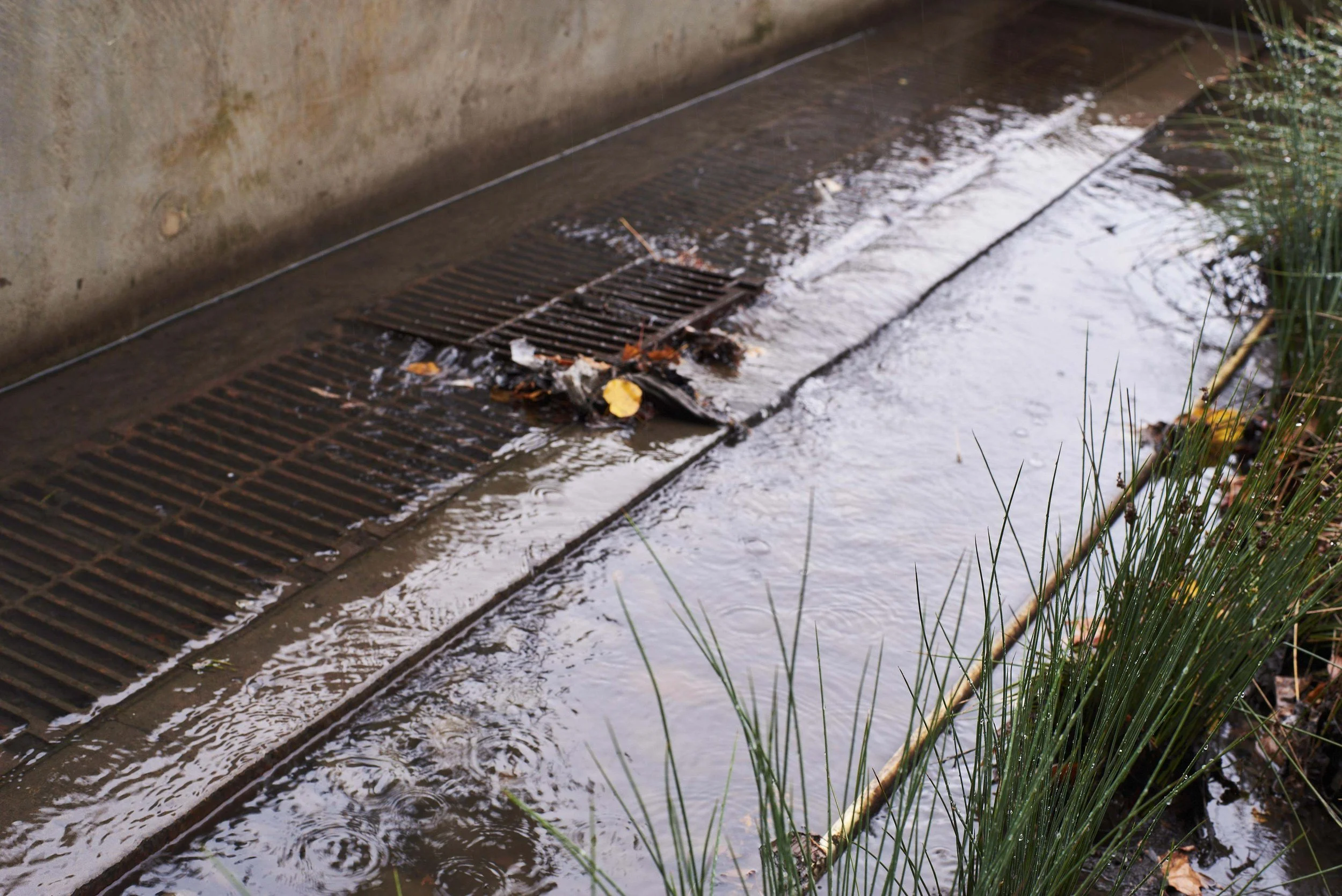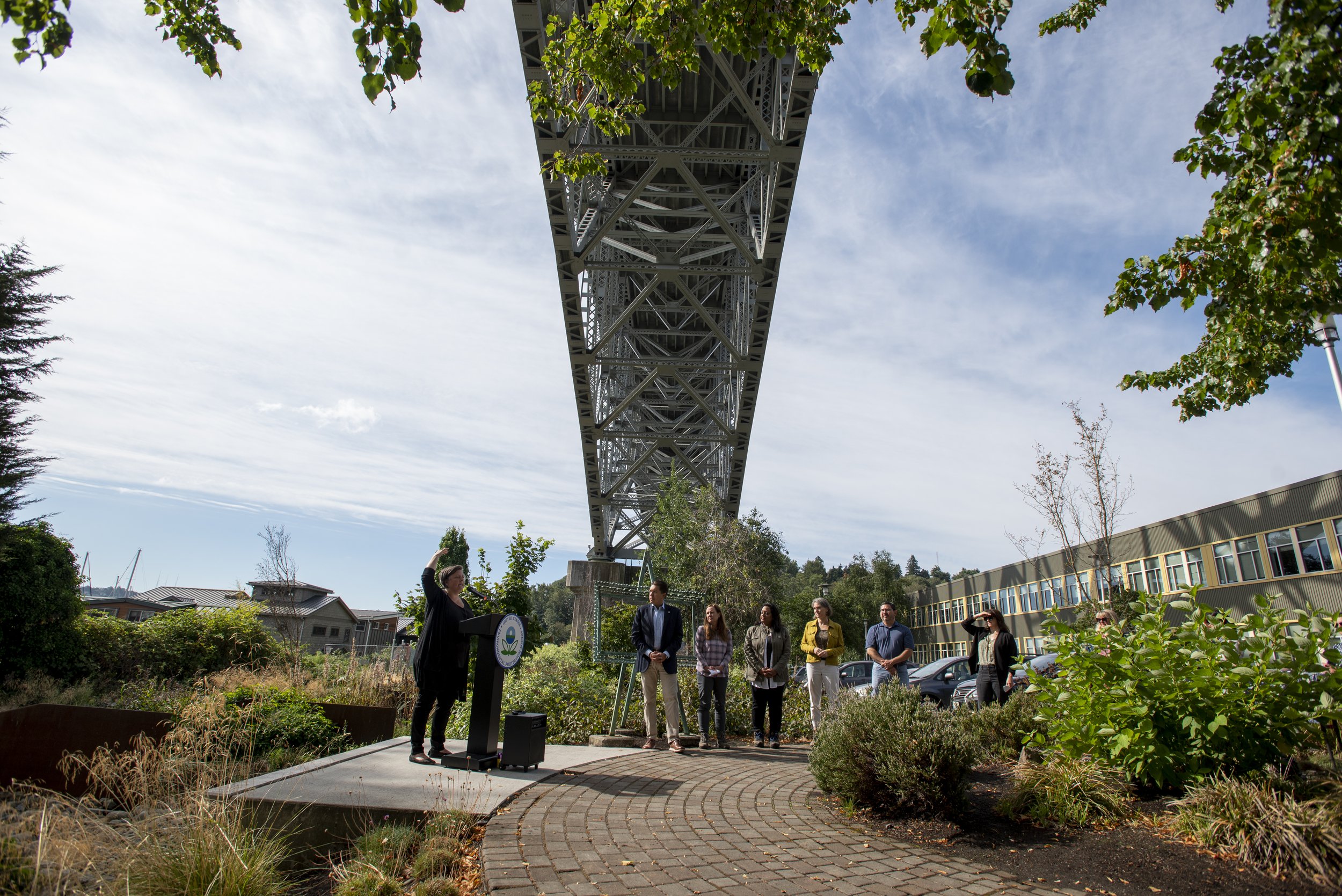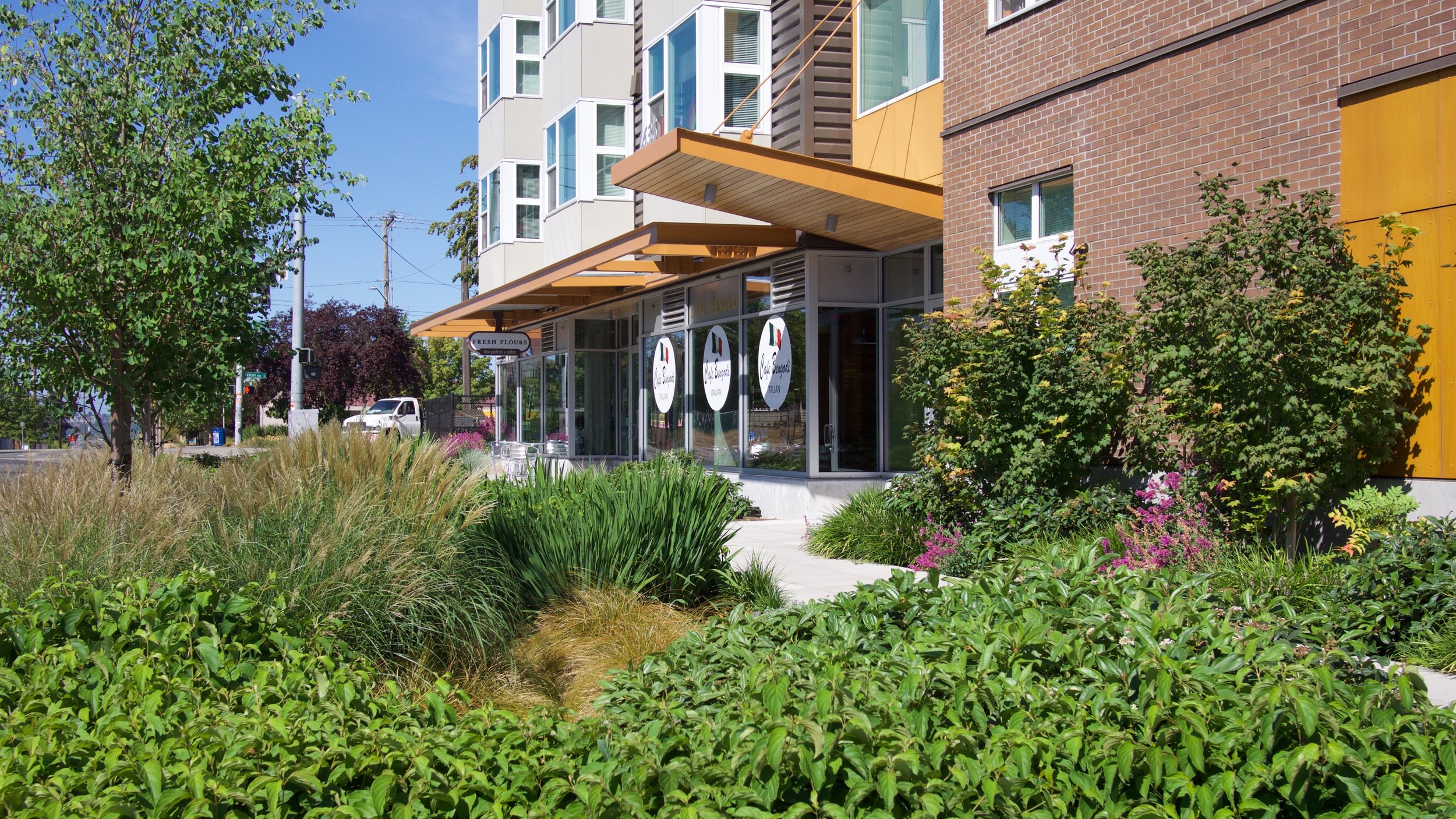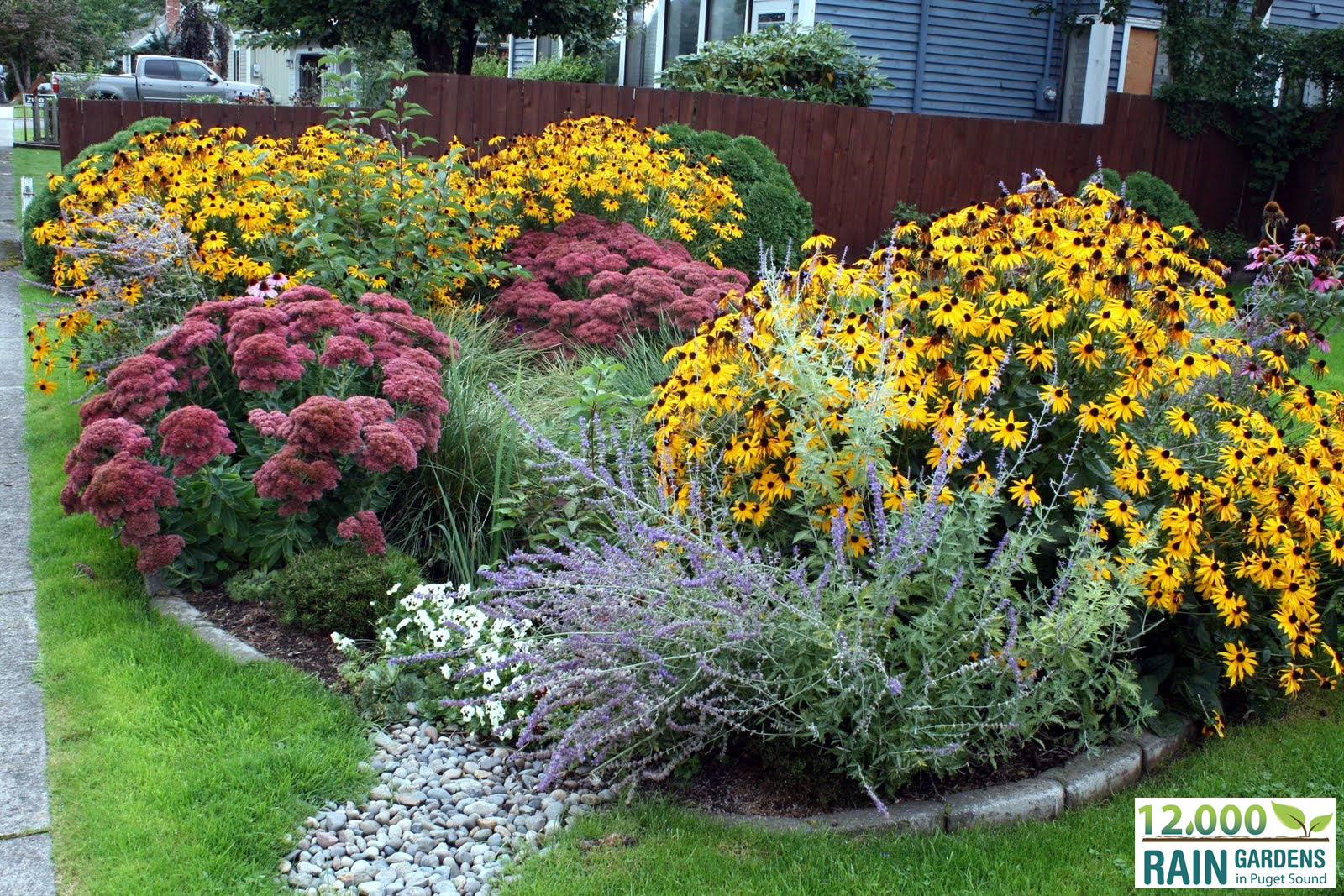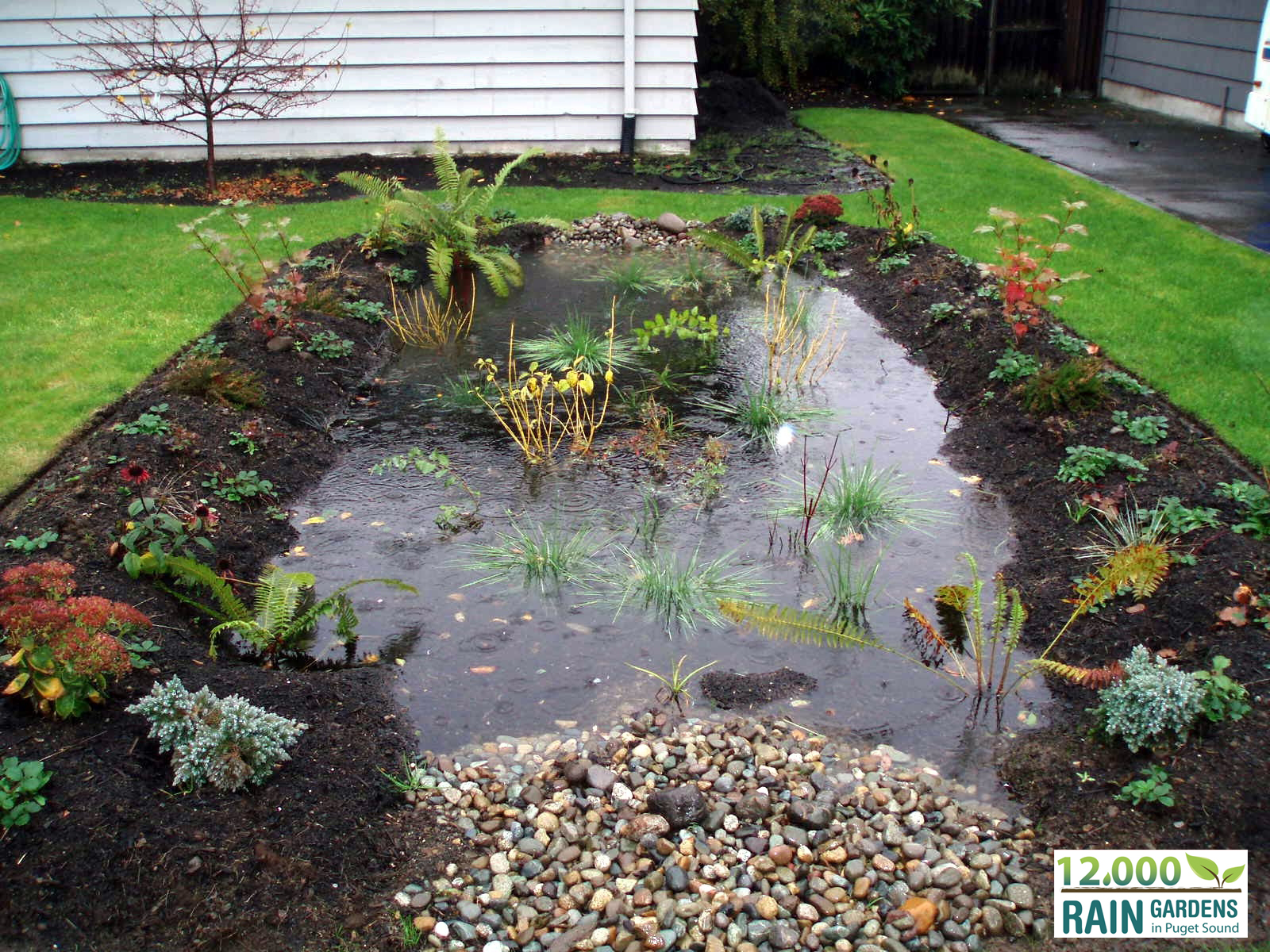Written by Tammy Kennon
Photographed by Melissa Buckingham, Pierce Conservation District
Pavement does not have to be permanent. The Puget Sound Conservation Districts, a collaboration of the Puget Sound’s 12 districts, reminds us that it’s possible to bring nature back into our urban landscapes.
Tacoma’s Hilltop neighborhood has reclaimed a derelict, crumbling parking lot and gained a multi-use green habitat. The project, completed in June, now serves dual use as a community gathering space and a natural filtration system for otherwise polluted runoff. The transformed space now filters on-site more than 130,000 gallons of polluted runoff a year.
Thanks to its natural beauty, economic growth and the thriving tech industry, the Puget Sound region is one of the most rapidly urbanizing areas in the nation. Our population grows by more than 200 people every day and by some estimates will top 7.5 million by 2030. Often, this growth puts our green spaces in a losing tug-of-war with urban development. Sprawling pavement, rooftops and roadways send increasing levels of polluted runoff into our vital waterways, creating one of our most urgent environmental challenges.
Reclaiming even small patches of pavement and restoring nature’s filtering systems can have a significant effect in mitigating stormwater pollution, while at the same time reenergizing urban neighborhoods and improving quality of life within our communities.
For the Tacoma Hilltop project, the Pierce Conservation District (PCD) enlisted more than 100 members from the community to help select a site and participate in its transformation.
“We partnered with Tacoma’s Healthy Homes Healthy Neighborhoods program to identify unfunctional space,” said Melissa Buckingham, Water Quality Improvement Director of the Pierce Conservation District. “Feast Art Center was moving into the area and wanted to create an outdoor community space. It just all came together.”
With funds from Boeing and The Nature Conservancy, the Feast Arts Center, an art school and gallery, converted 4,500 square feet of derelict pavement at south 11th and south Sheridan into a vibrant community gathering space featuring an outdoor silent movie theater, rain garden and a green multi-use lawn for events. The perimeter includes a drivable area to accommodate a variety of community events that might utilize food trucks or blood drive vehicles.
“The building and the lot had been a vacant eyesore for many years, so many in the community are grateful for the change,” said Todd Jannausch, co-owner of Feast Arts Center. “We use the space to host a variety of free events, classes and performances for the community.”
Bringing nature back into our urban environment can do more than just energize the neighborhood. A growing body of research suggests that living near green space inspires physical activity, improves neighborhood safety, boosts the economy and helps children learn. The bottom line: It’s easier being green!








